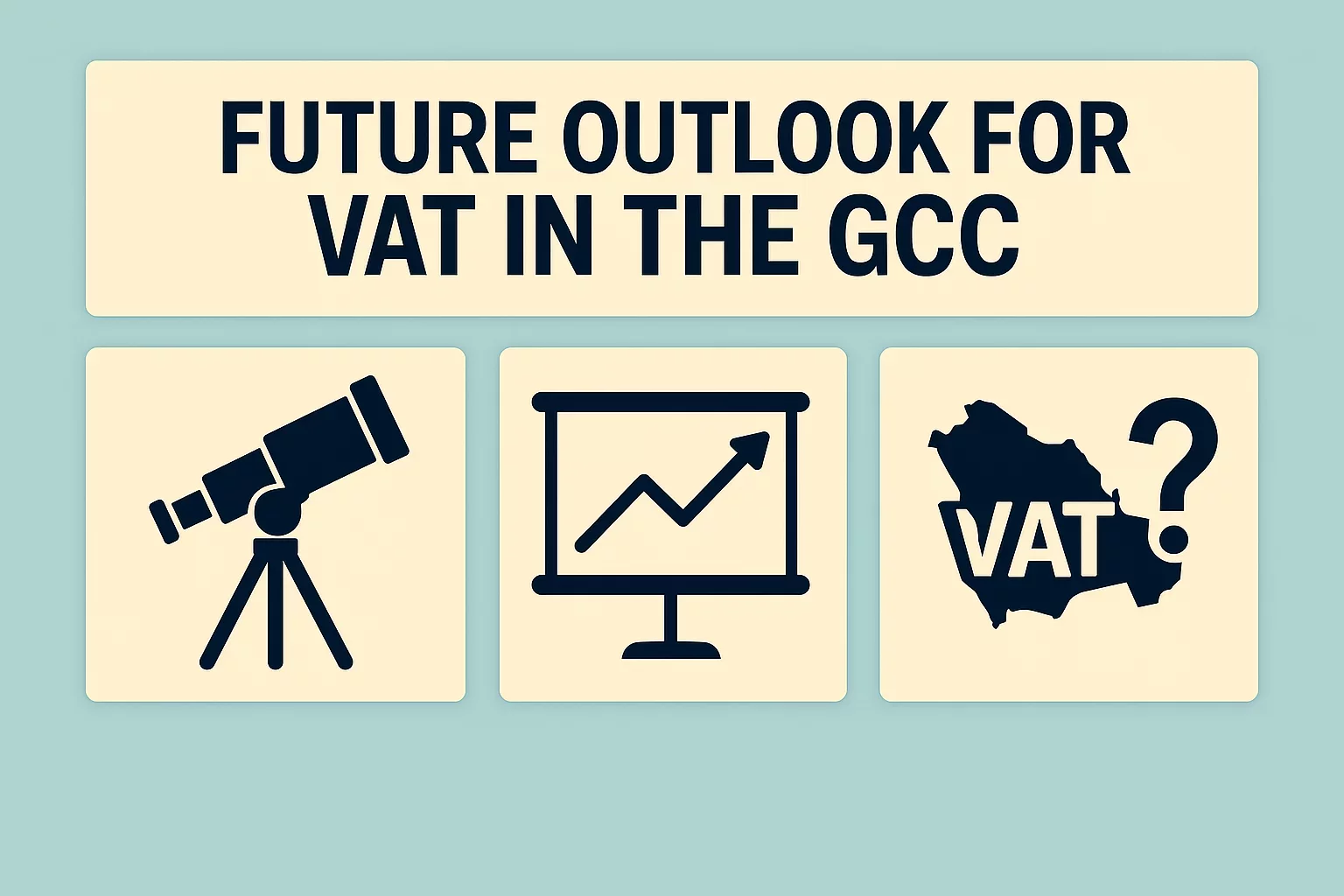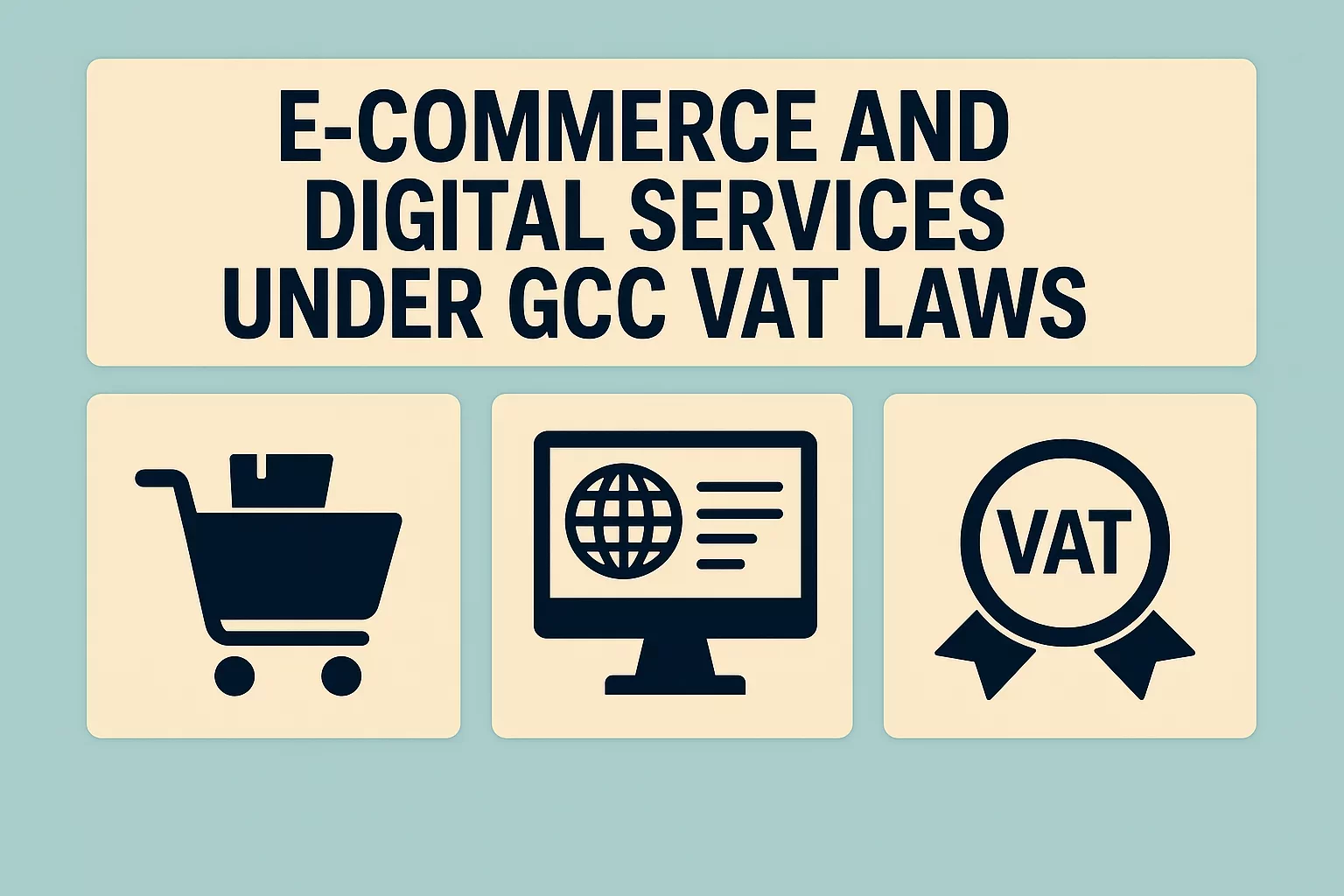VAT and Cross-border Trade in the GCC
Explore how VAT applies to cross‑border trade in the GCC, including reverse charge, zero‑rating, and intra‑GCC transactions.
The development of a common VAT framework aims to eliminate trade barriers and create an environment conducive to the free movement of goods and services. The GCC countries adopted the GCC VAT Agreement for a mix of economic, fiscal, and integration reasons, where fiscal sustainability and regional coordination are the most apparent.
The cross-border trade is an essential part of the strategic function of the GCC VAT Agreement. Although the GCC countries have different VAT implementation dates, rates, and statuses, the idea behind the GCC VAT Agreement is to establish uniform rules for cross-border transactions, particularly for intra-GCC supply or trade.
The Current Legal Landscape Under GCC VAT Agreement
As stated in the previous article in this series, the GCC VAT Framework Agreement serves as a common blueprint, but it is subject to different national rules and varying implementation timelines. A notable example of this is the implementation of VAT in Saudi Arabia (15%), the UAE (5%), Bahrain (10%), and Oman (5%), whereas Qatar and Kuwait have not yet introduced VAT.
One of the key provisions of the GCC VAT Agreement requires each GCC country to establish electronic service systems to comply with tax obligations, track internal supplies, and facilitate information exchange between national Tax Authorities. This electronic service system must include key transaction details, such as the Tax Identification Numbers of both the supplier and the customer, invoice numbers and dates, transaction descriptions, and the transaction amount.
If the supplier and customer data records match, a confirmation number is issued, which must be kept for tax audits and verification against tax returns. Additionally, the Tax Authorities in each GCC country have the right to access relevant data on internal supplies between registered taxable persons, and the system must also allow tracking of goods to their final destination.
VAT Treatment of Intra-GCC Trade
Under the GCC VA Agreement, intra-GCC supplies refer to the supply of goods and services between a supplier and a customer located in different GCC countries. The place of supply rules, which determine where the supply is taxed, differ depending on whether the transaction is B2B or B2C.
GCC-to-GCC B2B Supply of Goods and Services
For B2B intra-GCC transactions, the place of supply of goods is generally where the goods arrive, rather than where they were shipped from. In other words, the VAT is due in the GCC countries where the taxable persons buying goods are located. Regarding the B2B supply of services, the place of supply is the GCC country where the customer is located.
GCC-to-GCC B2C Supply of Goods and Services
For B2C transactions, the rules depend on the supplier's registration status. Therefore, if a supplier is registered or required to register for VAT in the consumer’s country, the place of supply is also where the goods arrive, meaning the GCC country where the consumer resides.
However, if the supplier is not registered in the customer’s country, the place of supply is the GCC country where the goods are located at the start of transportation, provided the supplier’s total supplies to that country in any 12 months do not exceed the VAT registration threshold, which is under the GCC VAT Agreement set to SAR 375,000 (approximately USD 100,000) or the equivalent in GCC currency. This is also known as the small cross-border supplies exemption. When the supplier exceeds the VAT registration threshold, it must register for VAT in the consumer’s GCC country and apply VAT there.
An additional mechanism is provided for B2C transactions, in cases where goods supplied across the GCC countries do not exceed the value of SAR 10,000 (approximately USD 2,650) or its equivalent in the GCC currency. In those cases, the GCC country where the goods are consumed can claim the VAT from the GCC country where it was initially paid. This mechanism is referred to as the Customs Union’s Automated Direct Transfer Mechanism.
Nevertheless, if the importing GCC country does not receive any evidence that VAT has already been paid in the exporting GCC country, the importing country can charge VAT at its entry points to ensure tax is collected where the goods are consumed.
Finally, the place of supply for B2C services is the GCC country where the supplier is located, not where the consumers reside.
GCC VAT Import and Export Rules
The import VAT is due when goods enter one of the GCC countries, unless they qualify for a tax suspension or a special payment mechanism. The import VAT can be suspended for goods under customs duty suspension, with the GCC countries having the right to require security for the tax.
The value of taxable imported goods is calculated based on the customs value plus any excise duties, customs duties, or other charges, excluding VAT. However, some imports are exempt from VAT, such as goods whose final supply is zero-rated or exempt, diplomatic and military imports, used personal luggage and household items brought by returning or new residents, and goods for non-profit organizations.
If goods are imported and moved from one GCC country to another, as a general rule, the import VAT is paid at the first point of entry into the GCC territory, deposited in a special account, and then transferred to the destination state through the GCC Customs Union’s Automated Direct Transfer Mechanism.
Under the GCC VAT Agreement, the exports of goods are generally zero-rated when the supplier can prove that the goods have physically left the GCC country within the defined time and with the required evidence.
Key Lessons for Businesses
Although the signing of the GCC VAT Agreement formalized the GCC countries' desire to establish a common and harmonized VAT system, the reality is still far from being a fully integrated and operational VAT territory, with differing national implementations, rates, and compliance requirements creating a patchwork of rules for cross-border trade. Therefore, businesses operating in the region must pay close attention to national VAT rules and be aware that Qatar and Kuwait have not yet introduced VAT.
Additionally, until the GCC develops a fully operational electronic service system, businesses must focus on how GCC-to-GCC supplies are treated to avoid being classified as exports and imports, instead being treated as intra-GCC supplies. Furthermore, GCC countries may still require different documents for cross-border transactions, and customs procedures may vary from one country to another.
Finally, since the whole VAT system is still maturing in the region, so is the compliance mechanism. While some countries, such as Saudi Arabia and Oman, continue to update implementing regulations and guides, the UAE focuses on clarifying technical measures. As a consequence of this still evolving environment, businesses must track any legislative changes.
Conclusion
Businesses engaged in cross-border GCC trade, whether intra-GCC or importing and exporting into and from GCC countries, continue to await a more unified and harmonized approach from the GCC countries. Despite agreeing on a common VAT framework, progress towards reaching this goal is still hindered by national interests. It requires more effort from all parties to establish a trading environment similar to that of the EU.
Nevertheless, as the GCC countries continue to move toward a more interconnected system, VAT rules may be simplified in the years to come. Until then, documentation, role clarity, and up-to-date country guidance are best practices for achieving VAT compliance in the GCC region.
Frequently Asked Questions
The Agreement establishes uniform rules for intra-GCC transactions, aiming to create a tax system that facilitates the easier navigation of VAT requirements. Generally, for B2B transactions or supplies, VAT is usually due where the customer is located. For B2C transactions, it depends on the supplier’s registration status and the location where the goods or services are consumed.
If a supplier’s total annual supplies to another GCC country remain below the registration threshold, VAT is charged at the point where the goods begin their journey, not at the point of arrival. If the registration threshold is exceeded, the supplier must register for VAT and thus is liable for VAT in that GCC country.
For goods valued below SAR 10,000 (around USD 2,650), VAT paid in the exporting GCC country can be transferred to the importing GCC country via the GCC Customs Union’s Automated Direct Transfer Mechanism.
If the importing GCC country does not receive proof that VAT has already been paid, it can collect VAT at the point of entry to ensure tax is applied where the goods are consumed.
Exemptions apply to goods whose final supply is zero-rated or exempt, as well as diplomatic and military imports, personal effects of residents, goods for non-profit organizations, and imports of returned goods.
Source: Common VAT Agreement of the States of the Gulf Cooperation Council (GCC), PwC, BDO


